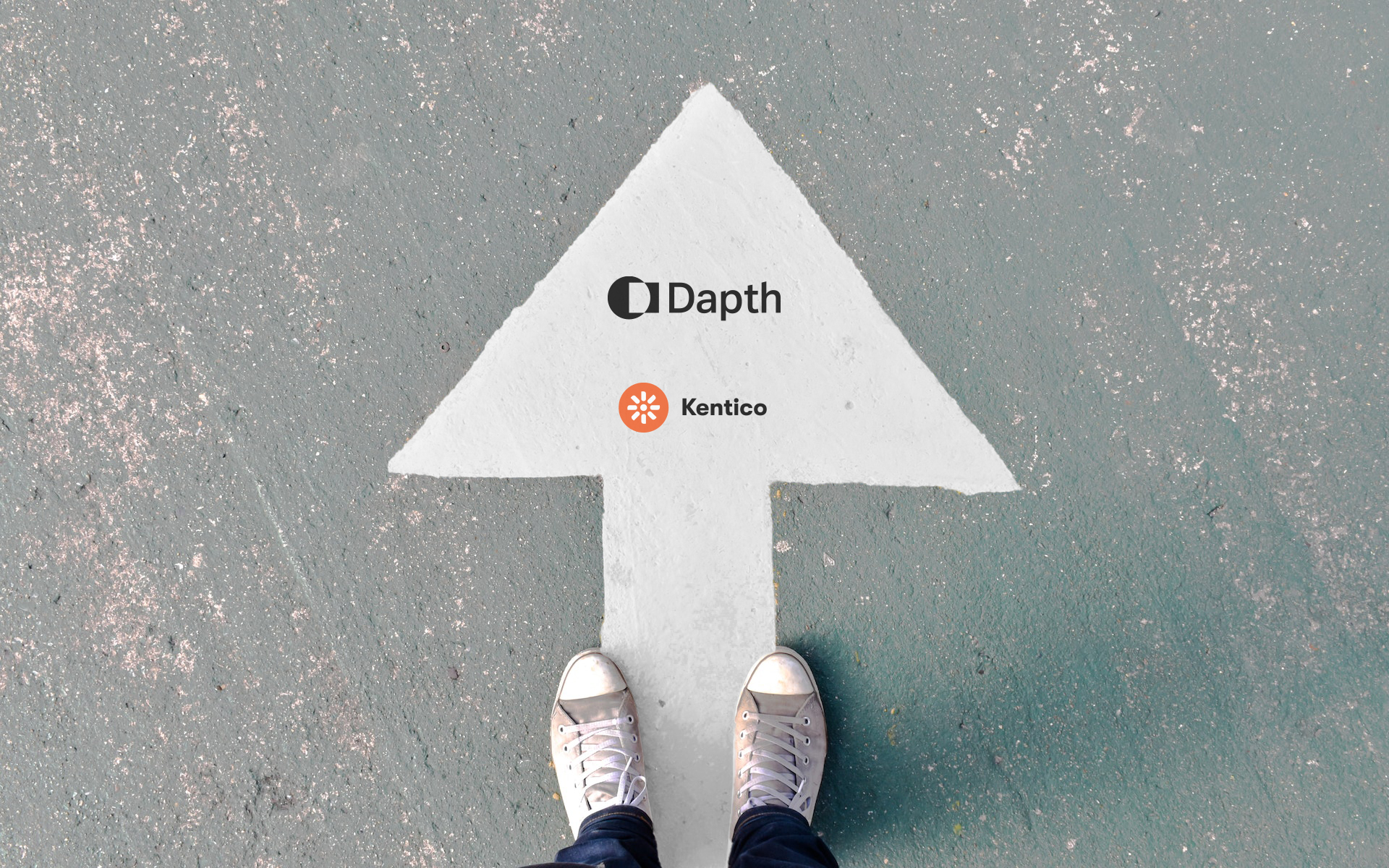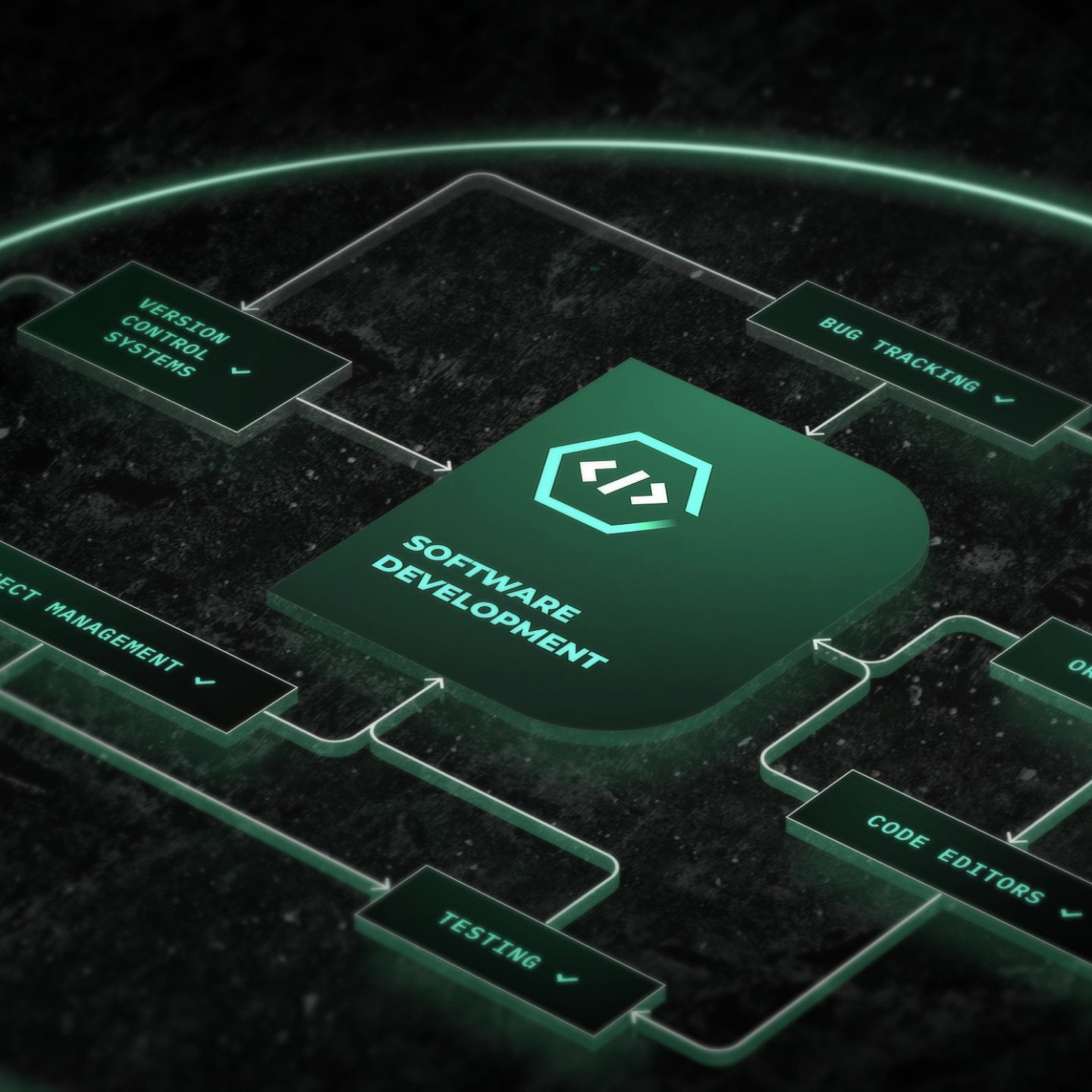
How Collaboration Leads to Success
Collaboration is a critical factor in the success of development teams. Effective team collaboration is essential throughout the development lifecycle to achieve successful software projects. Modern software development projects require teams to work together seamlessly - which enhances productivity, creativity, and the project's overall success.
Collaboration shapes how teams work together to achieve common goals and deliver successful outcomes throughout the development lifecycle. There are several reasons why it is so vital - it enables teams to:
- Leverage diverse perspectives, skills, and expertise
- Fosters a culture of collective intelligence and innovation.
- Tap into each other's strengths
- Share knowledge and insights more easily
- Solve complex problems more efficiently
Collaboration is a powerful tool that enables developers to deliver products and services to market faster and complete high-quality projects. By working together, individual collaborators can tackle specific parts of the project. One benefit of a collaborative work culture is that employees with lighter workloads can support overwhelmed colleagues or handle pending tasks when they have free time.
Improve Efficiency
It is essential to problem-solving and can also make processes more efficient. For example, if you encounter a roadblock while trying to solve a problem, seeking help from a colleague and brainstorming together can help you find a solution more quickly.
Dissolves Organisational Silos
It can also dissolve silos within the organisation, fuel growth and understanding across departments. It creates new avenues for communication, boosts retention, and improves employee engagement. A culture that values working together keeps current employees from looking for work elsewhere. Collaboration fosters inclusivity and builds connections.

Challenges Without Effective Collaboration
Without proper collaboration tools and practices, teams may face challenges hindering their progress - underscoring its importance. Some of the challenges that teams may face without proper collaboration tools and practices include:
Communication gaps result in a lack of clear vision, a negative employee mindset, a lack of trust among team members, and an oversaturation of ideas.
Lack of productivity due to organisational silos, which can create significant friction between team members and obstruct communication and collaboration.
Employee hesitation and lack of compliance, especially in work from home (WFH) set-ups, result in isolation and a lack of general communication.
Version conflicts when multiple team members work on the same files, leading to data loss, duplicated efforts, and confusion about the current version.
To avoid these challenges, teams must employ practical collaboration tools and strategies that promote diversity, productivity, and trust. This will help them achieve their project goals and ensure everyone is on the same page.
Collaboration gaps can result from a need for proper communication tools among team members. Important information, updates, or decisions may not be effectively communicated, leading to misunderstandings, delays, and even project failures. Collaboration is critical to the success of any project, but without adequate tools and practices, it can be challenging to achieve.
Providing timely feedback can be difficult without efficient collaboration tools, which can slow down the development process, hinder progress, and impact the quality of deliverables. Tracking changes made by team members becomes complicated without the proper collaborative tools.
Example of Collaboration
When you encounter a roadblock while trying to solve a problem, seeking help from a colleague and brainstorming together can help you find a solution quickly. Without the proper tools, this can lead to errors, inconsistencies, and difficulty in identifying the source of issues or bugs. Teams may need more effective collaboration to centralise information management, resulting in scattered data, misplaced documents, and resources. Without effective collaboration, teams may risk misaligning project goals, priorities, and expectations, leading to wasted efforts, rework, and cohesion.
Serious Issues
When collaboration tools are inadequate, there is a risk of unauthorised access to sensitive information, data breaches, and loss of intellectual property. This can have serious consequences for both the team and the organisation. As teams grow or projects become more complex, it becomes increasingly difficult to collaborate without proper tools and practices. Scaling up operations, managing larger teams, and coordinating efforts effectively requires appropriate collaboration infrastructure.
The absence of practical collaboration tools and practices can hinder productivity, creativity, and overall project success. Teams must invest in robust collaboration solutions and establish clear communication channels, workflows, and guidelines to overcome these challenges and work together efficiently towards common goals.
Effective collaboration is crucial for development teams to achieve successful project outcomes. Without proper collaboration tools and practices, teams may face several challenges, including version conflicts, communication gaps, feedback delays, and difficulty tracking changes.

Version Conflicts
Version conflicts arise when team members work independently without a centralised system for managing code changes. This can lead to disputes when multiple individuals attempt to modify the same file simultaneously and result in code inconsistencies, errors, and disruptions in the development workflow, leading to inefficiencies and delays in project delivery.
Communication Gaps
Communication gaps also pose significant challenges in the absence of effective collaboration practices. Without clear channels for communication and collaboration, team members may struggle to exchange information, share updates, and coordinate tasks effectively. This lack of communication can lead to misunderstandings, duplication of efforts, and a lack of alignment among team members, impeding progress and hindering collaboration.
Delays in Feedback
Delays in feedback can pose a significant challenge without effective collaboration. Timely and constructive feedback is essential for guiding development efforts, identifying issues, and making necessary adjustments. Teams that lack a streamlined feedback mechanism may experience delays in receiving feedback, leading to prolonged development cycles, missed opportunities for improvement, and reduced responsiveness to changing requirements.
Tracking Changes
Tracking changes is another challenge that teams may face without proper collaboration tools. In environments where changes are made without clear documentation or version control systems, tracking and managing code modifications, bug fixes, and feature enhancements becomes challenging. This lack of visibility into changes can result in confusion, errors, and difficulty maintaining code integrity and stability.
By addressing these challenges and embracing effective collaboration strategies, teams can enhance productivity, foster innovation, and deliver high-quality software solutions that meet user needs and exceed their expectations.




Version Control Systems (VCS) for Collaboration
Version Control Systems (VCS) are essential software development tools, allowing teams to collaborate on projects efficiently. They provide a structured framework for managing code and other project assets, making it much easier for teams to review changes and coordinate efforts.
One of VCS's most significant benefits is its ability to support parallel development and experimentation. VCS systems offer various ways to encourage collaboration, such as branching and merging, which allow developers to work on isolated features and fixes without impacting the main codebase. This makes it easy for teams to experiment with new ideas while minimising conflicts and ensuring code integrity.
Single Source of Truth
Another critical advantage of Version Control Systems is its centralised repository, a single source of truth for all project files and code. This central location ensures that everyone in the team works on the latest code version, minimising errors and inconsistencies.
Version Control Systems (VCS) allow team leaders to manage who can access a repository and what actions they can take, such as read, write, or administrative access. This ensures that data is secure and compliant, enabling teams to collaborate beyond code development. Using VCS, team leaders can easily control access and permissions for repositories, keeping data safe and allowing teams to work together effectively.
Additional Collaboration Tools
In addition to these core features, some VCS platforms offer additional collaboration tools such as wikis, issue trackers, and project boards. These tools facilitate communication, task management, and team documentation - making it easier for teams to stay organised and productive. VCS is an essential tool for software development teams. It provides a structured and efficient environment for:
Managing code
Coordinating efforts
Reviewing changes
Ensuring project integrity, and
Maintaining quality
With its ability to support parallel development and experimentation, VCS makes it easy for teams to collaborate on complex projects while minimising conflicts and ensuring code integrity.


Why Git is Essential For Collaboration
What is Git?
What is Git, and why is it essential to collaboration? Git is a distributed Version Control System (VCS) developed in 2005, it falls into the category of software development tools. Git stands for 'Global Information Tracker'. It was designed to manage changes in source code or any set of files offering a way to:
- Track versions
- Collaborate on projects
- Maintain a detailed history of changes
Some core Git concepts are:
- Repositories – projects with their complete version history
- Commits – snapshots of the project at specific times
- Branches – parallel versions of a repository to explore different changes and/or features
The decentralised approach in Git allows multiple developers to work on a project simultaneously without interfering with each other. Developers can merge changes when required, and branches ensure that the main project line (the "master") remains stable while experimental or new features are developed separately.
Git's distributed nature also ensures every contributor has a complete local copy of the entire project history. This enables developers to work independently and asynchronously, fully using their productive periods without needing continuous access to a central repository.
For Enhanced Code Quality and Peer Review
Git is a popular version control system that allows developers to manage their codebase effectively. However, GitHub, GitLab, and Bitbucket are platforms that complement Git and offer additional features that help foster a code review culture.
In a code review culture, team members are encouraged to review each other's code before merging it into the main codebase. This process allows team members to provide constructive feedback, suggest changes, or approve modifications. By pooling the team's knowledge and expertise, potential issues in the codebase can be identified early, which ensures its overall health.
The Role of GitHub, GitLab and Bitbucket
GitHub, GitLab, and Bitbucket offer a platform for code review, making it easier for team members to collaborate on code. They provide tools to track changes, manage issues, and facilitate discussions. Additionally, they offer a way to automate code testing, which helps to ensure that the codebase is robust, maintainable, and less prone to errors. Platforms like GitHub, GitLab, and Bitbucket are crucial in promoting a code review culture as they provide an efficient way for team members to collaborate on code, identify issues early, and ensure the final product is high-quality.

Scalability
Git is a highly scalable tool suitable for projects of all sizes, from small scripts to large-scale enterprise applications. Whether managing a repository with a few files or millions, Git's performance remains consistent. This scalability ensures that teams of any size, from solo developers to multinational corporations, can efficiently use Git.
Git is an essential tool in software development. It helps developers work together on the same codebase, keep track of changes, and ensure everyone is working on the latest code version. It is the most widely used modern version control system in the world.
How Does Git Work?
With Git, developers can easily create and manage branches, merge changes from different contributors, and revert to previous code versions if necessary.
Git allows developers to easily roll back to a previous version, which is crucial when working on large projects with many contributors. Many commercial projects and open-source software projects rely on Git for version control. Git works nicely on various operating systems and Integrated Development Environments (IDEs).
Unlike other version control software, Git doesn't consider file names when storing and versioning the file tree. Instead, it focuses on the file content itself. Git is the most broadly adopted tool, with a large talent pool of developers already well-versed in it. Its predominance also means many third-party software tools and services, including IDEs, are already integrated with Git.
How is Git Different?
Git, a version control system (VCS), differs from other VCSs in handling data. Most VCSs store data as a list of file-based changes. These systems store the information as files and the changes made to each file over time. In contrast, Git stores data as a series of snapshots of a miniature filesystem.
Whenever you commit your project, Git takes a ‘picture’ of what all your files look like at that moment and stores a reference to that snapshot. To optimise storage, Git doesn't store unchanged files again, only a link to the identical file it has stored before. In essence, Git thinks of its data as a continuous stream of snapshots.

Key Benefits of Using Git for Collaboration
Git is a powerful tool that offers many benefits for fostering collaboration within development teams. One of the most significant advantages of Git is that it streamlines workflows, making it easier for team members to work together on a project. By using Git, developers can easily collaborate on code and track changes made by others, which helps to reduce errors and ensure that the final product is high-quality.
Peer Review
Another significant benefit of using Git is that it allows for peer review, an essential aspect of software development. Peer review involves having team members review each other's code to identify potential issues, suggest improvements, and ensure that the code meets the project's requirements. With Git, peer review is easy to implement, making it an essential tool for improving code quality and ensuring the final product is bug-free.
Project Visibility
Additionally, Git provides better project visibility, essential for successful collaboration. With Git, team members can easily see what others are working on, review code changes, and track progress. This allows for better planning, coordination, and communication among team members, which is crucial for the success of any project.
Collaboration and Efficiency
Git is essential for fostering collaboration within development teams. By streamlining workflows, enabling peer review, providing better project visibility, and simplifying code management, Git helps teams to work together more efficiently and effectively.

The Takeaway
Effective collaboration within development teams is vital to achieving successful project outcomes. Collaboration enhances productivity, creativity, and project success by leveraging diverse perspectives and efficient knowledge sharing to solve problems effectively.
However, communication gaps, productivity issues, version conflicts, and inadequate collaboration tools can hinder team progress and project success. To overcome these challenges, teams must employ effective collaboration strategies and invest in robust solutions that promote seamless communication, diversity, productivity, and trust among team members. This includes using version control systems (VCS) like Git, which are crucial in managing code changes, enabling concurrent work, ensuring version accuracy, and fostering collaboration.
Collaboration within development is not just a beneficial aspect but a critical necessity for achieving project success in today's software development landscape. By embracing collaboration, utilising practical tools like Git, and following best practices, teams can foster innovation, drive growth, and deliver high-quality software solutions that drive business success. Collaboration is the cornerstone of growth and success in modern software development endeavours.
Frequently Asked Questions
Git is a distributed version control system (VCS) for tracking changes in source code during software development. It allows multiple developers to collaborate on projects, manage code versions, and efficiently track project history.
Collaboration is crucial because it enhances productivity, fosters innovation, and ensures that teams work together effectively to achieve common goals. It enables the sharing of knowledge, diverse perspectives, and collective problem-solving.
Some alternatives to Git include Subversion (SVN), Mercurial (Hg), and Perforce (P4).
Git is a version control system, while GitHub is a web-based platform that hosts Git repositories. Git manages code versions locally, while GitHub allows developers to store, collaborate, and share their Git repositories online.
Git promotes collaboration by enabling developers to work on the same project concurrently, manage changes using branches, merge code changes seamlessly, and track project progress. It provides tools for code review, issue tracking, and project management, enhancing team collaboration.
No, Git is primarily a version control system for managing source code and cannot execute code directly. Developers use Git to track, version, and collaborate on code, but they use other tools and environments (like IDEs or command-line interfaces) to execute and test code.





_web.webp)































_web.webp)
_web.webp)
_web.webp)

_web.webp)



_web.webp)





























